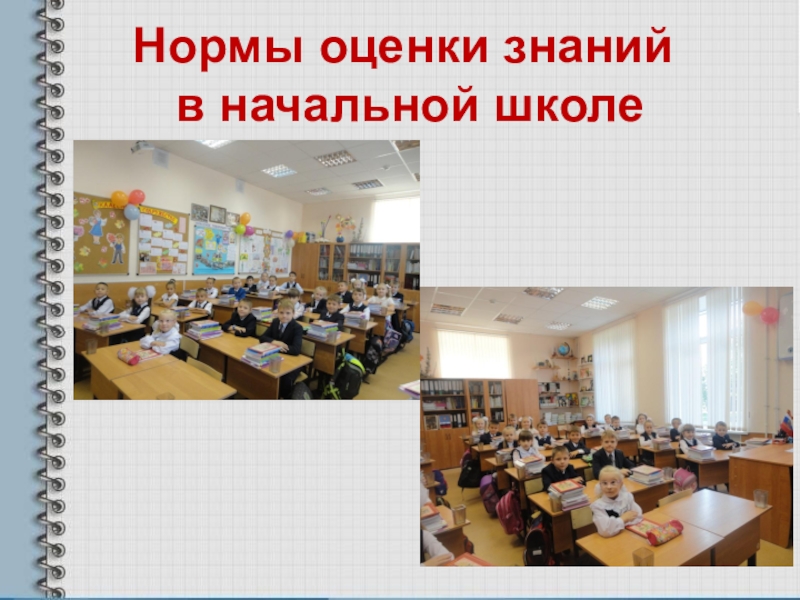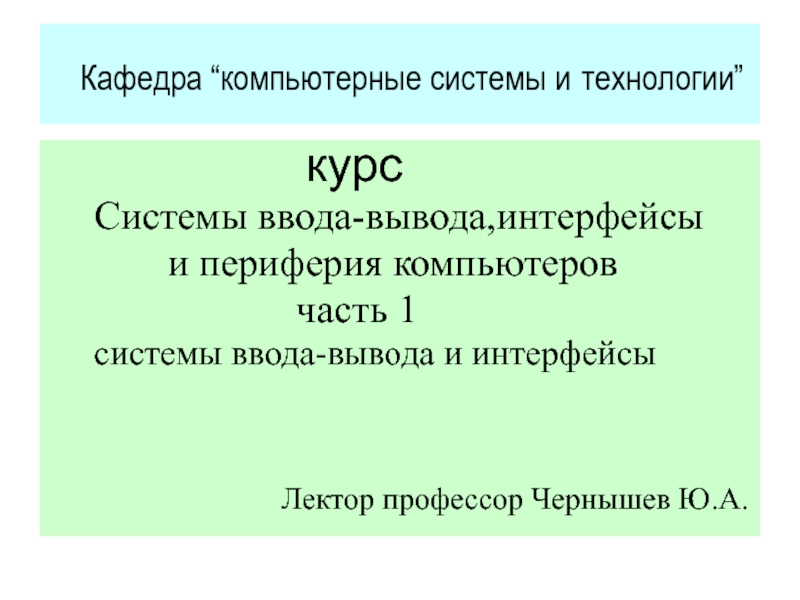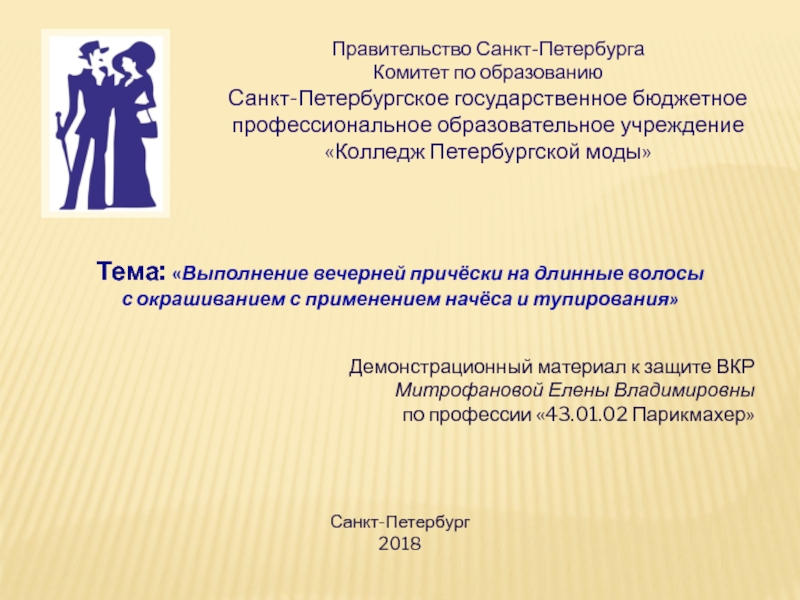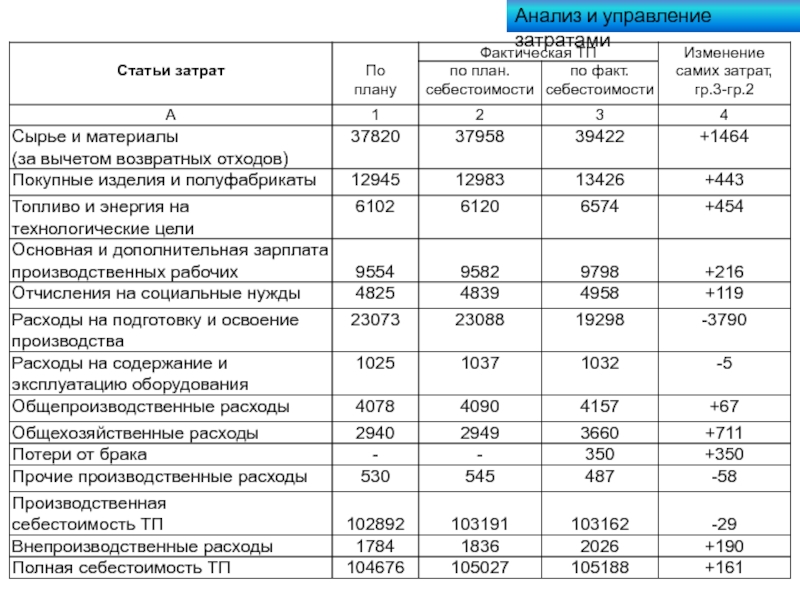Разделы презентаций
- Разное
- Английский язык
- Астрономия
- Алгебра
- Биология
- География
- Геометрия
- Детские презентации
- Информатика
- История
- Литература
- Математика
- Медицина
- Менеджмент
- Музыка
- МХК
- Немецкий язык
- ОБЖ
- Обществознание
- Окружающий мир
- Педагогика
- Русский язык
- Технология
- Физика
- Философия
- Химия
- Шаблоны, картинки для презентаций
- Экология
- Экономика
- Юриспруденция
The difference between African American English and Standart English
Содержание
- 1. The difference between African American English and Standart English
- 2. African American English (AAE) Phonology 1 r-deletion (NOT unique to AAE) guard god nor gnaw sore saw poor pa fort fought court caught l-deletion (some speakers) toll toe all awe help hep
- 3. Consonant cluster simplification (NOT unique /OPTIONAL) passed pass meant men
- 4. Double / Multiple negatives (NOT unique
- 5. Deletion of ‘be’ SAE AAE He is nice
- 6. Deletion of ‘be’ Exceptions SAE AAE He is
- 7. Habitual ‘be’ SAE AAE John be happy. John is
- 8. Phonological Characteristics Syllable-final devoicing of obstruents (e.g.
- 9. Final consonant cluster reduction: deletion of second
- 10. Lexical Differences To a great extent, AAVE
- 11. Morphologic and Syntactic Characteristics Remote Phase Marker“Remote
- 12. In a study by Jackson and Green (2005),
- 13. examplesChris James - Black British Accent (Stand
- 14. Скачать презентанцию
African American English (AAE) Phonology 1 r-deletion (NOT unique to AAE) guard god nor gnaw sore saw poor pa fort fought court caught l-deletion (some speakers) toll toe all awe help hep
Слайды и текст этой презентации
Слайд 1 The difference between African American English and Standart English
АИН 1701
Druzhinina Asya
Слайд 2African American English (AAE)
Phonology 1
r-deletion (NOT unique to AAE)
guard god
nor gnaw
sore saw
poor pa
fort fought
court caught
l-deletion (some speakers)
toll toe
all awe
help hep
Слайд 3 Consonant cluster simplification (NOT unique /OPTIONAL)
passed pass
meant men
Neutralization of [I]
and [E] before nasals (NOT unique)
pin pen
bin Ben
tin ten
Loss of
interdental fricatives (NOT unique) thing fing
this, that, these, those [d]
African American English (AAE)
Phonology 2
Слайд 4 Double / Multiple negatives (NOT unique to AAE)
He
don’t know nothing.
African American English (AAE)
Syntax 1
Слайд 5 Deletion of ‘be’
SAE AAE
He is nice / He nice
He’s nice
They are mine / They mine
They’re mine
I am
going to do it / I gonna do itI’m going to do it
African American English (AAE)
Syntax 2
Слайд 6 Deletion of ‘be’ Exceptions
SAE AAE
He is / he’s as
nice He as nice as he say he
isas he says he is
*He’s as nice *He as nice as he say he
as he says he’s
How beautiful you are How beautiful you are
*How beautiful you’re *How beautiful you
Here I am Here I am
*Here I’m *Here I
African American English (AAE)
Syntax 3
Слайд 7 Habitual ‘be’
SAE AAE
John be happy. John is always happy.
John happy. John
is happy now.
He be late. He is habitually late.
He late. He is
late this time.Do you be tired? Are you generally tired?
You tired? Are you tired now?
African American English (AAE)
Syntax 4
Слайд 8Phonological Characteristics
Syllable-final devoicing of obstruents (e.g. “mad” sounds like “mat”)
Syllable-final
consonant deletion (e.g., "man" becomes [mæ᷉])
Syllable-final glottalization (e.g., "good" becomes
[gʊʔ], "sight" becomes [saɪʔ], "talk" becomes [tɔʔ])Substitution of dental fricatives
/f/ or /t/ for /θ/ in word-medial and –final position (e.g. “author” becomes [ɔfə], “math” becomes [mæf] )
/d/ for /ð/ in word-initial, and /d/ or /v/ for /ð/ in word-medial and word-final position (e.g. “this” becomes [dɪs], “mother” becomes [mʌvɚ] and “bathe” becomes [beɪv])
Substitution of word-final /ŋ/ : replaced by /n/ in function morphemes and content morphemes with two syllables only (e.g. “tripping” is pronounced as [trɪpɪn] but “sing” does not become[sɪn])
Слайд 9Final consonant cluster reduction: deletion of second consonant in words
ending with clusters
/sk/, /nd/, /sp/, /ft/, /ld/, /dʒd/, /st/, /sd/,
or /nt/ (e.g. “left” becomes [lɛf]; “cold” becomes [kol]; “desk” becomes [dɛs]Substitution of blends
/str/ replaced by /skr/ (e.g. “street” becomes [skrit])
/ʃ r/ replaced by /str/ (e.g. “shrill” becomes [strɪl]
Use of metathesised forms (e.g. [aks] for “ask” or [graps] for “grasp”)
Deletion of liquids:
Consonantal /r/ is usually dropped if not followed by a vowel, (e.g. “poor” becomes [po]) or, if it’s between a consonant and a back rounded vowel (e.g.”throw” becomes [tho]) and intervocalic /r/ may also be deleted (e.g. “story” becomes [stɔ.i] )
/l/ is often deleted in patterns similar to /r/ and, is also impacted by cluster reduction.
Vowel differences
/ɛ/ and /ɪ/ are both pronounced as [ɪ], when they occur before nasal consonants (e.g. pen and pin become homophones). The distinction between /ɪ/ and /iː/ is frequently reduced before liquids(e.g. “feel” and “fill” become homophones).
/uː/ and /oʊ/ merge when they occur before /r/.
Lowering of /ɪ/ to /ɛ/ or /æ/ before /ŋ/ (e.g. [θɛŋ] or [θæŋ] for thing).
Reduction of certain diphthong forms to monophthongs, (e.g. /aɪ/ becomes /aː/, /ɔɪ/ is monophthongized, especially before /l/, making “boil” sound like ‘ball”
Слайд 10Lexical Differences
To a great extent, AAVE shares a common lexicon
with SAE, particularly vocabulary from informal and southern dialects. However,
AAVE varies from SAE more than any other dialect spoken in North America. Over the years many AAVE words have become commonly used by many SAE speakers. Examples include: dig (meaning “to understand/appreciate”), jazz, tote, chill out (meaning to relax, calm down), main squeeze (referring to one's significant other), soul (referring to African American food and music), funky, and threads (meaning “clothes”), def (meaning “excellent”), phat (meaning “extremely good-looking, tasty, nice), diss (meaning “disrespect”), and jive (meaning to speak in a dishonest or misleading manner).AAVE also has words that either are not part of SAE, or have completely different meanings from their usage in SAE. Examples include; kitchen (refers to the curly hair at the nape of the neck), ashy (meaning “dry skin”), siditty (meaning snobbish or bourgeois), and bougie (meaning “an elitist African American”).
Слайд 11Morphologic and Syntactic Characteristics
Remote Phase Marker
“Remote Phase Marker” is used
by some linguists to refer to the aspect marked by
stressed “been”. In order to distinguish stressed “been” from unstressed “been” as used in SAE, linguists often write it as “BIN”. (e.g., “She BIN running” means “She has been running for a long time” and “She been running” means “She has been running”).Habitual "Be"
In SAE, the phrases "Jess be talking on the phone" and "Jess is talking on the phone" would have the same meaning. However, in AAVE, the phrase "Jess be talking on the phone" means that Jess customarily talks on the phone, but may not be doing so at the moment
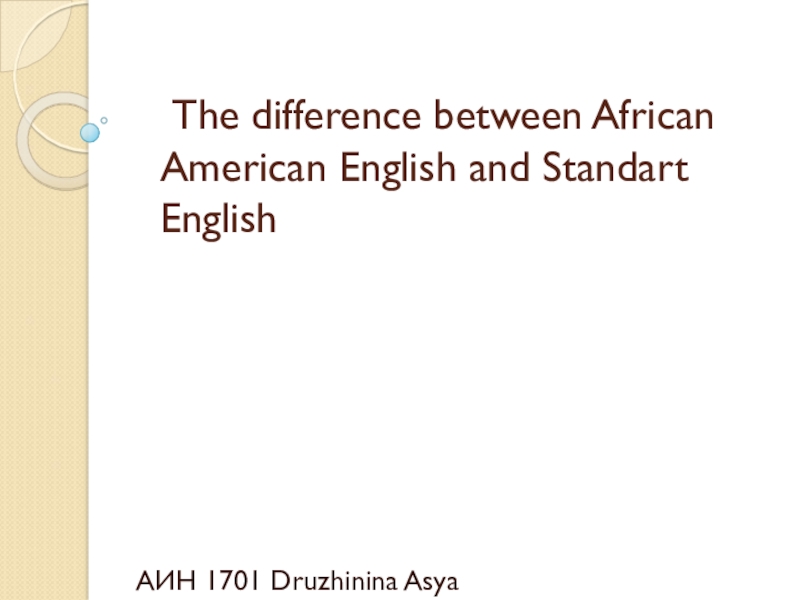

![The difference between African American English and Standart English Consonant cluster simplification (NOT unique /OPTIONAL) passed pass meant men Neutralization of [I] and Consonant cluster simplification (NOT unique /OPTIONAL) passed pass meant men Neutralization of [I] and [E] before nasals (NOT unique) pin](/img/tmb/7/630057/a57e7117f355f200ebff3ea0c49d1989-800x.jpg)

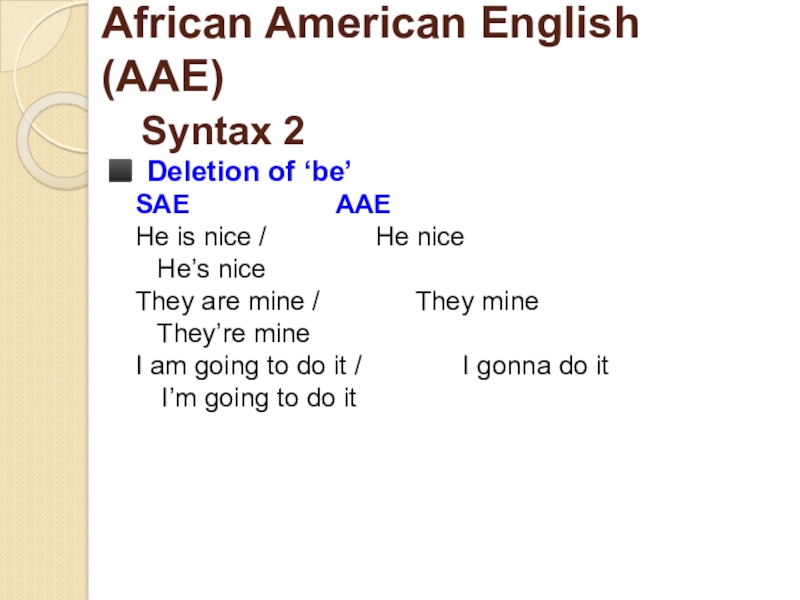







![The difference between African American English and Standart English examplesChris James - Black British Accent (Stand Up Comedy)https://www.youtube.com/watch?v=dI38GtWFihYEbonics Lesson for examplesChris James - Black British Accent (Stand Up Comedy)https://www.youtube.com/watch?v=dI38GtWFihYEbonics Lesson for White People [Kult America]https://www.youtube.com/watch?v=Duof1hVFeuIHow to talk](/img/tmb/7/630057/0fbba39e8075723960396c33b1778b54-800x.jpg)







